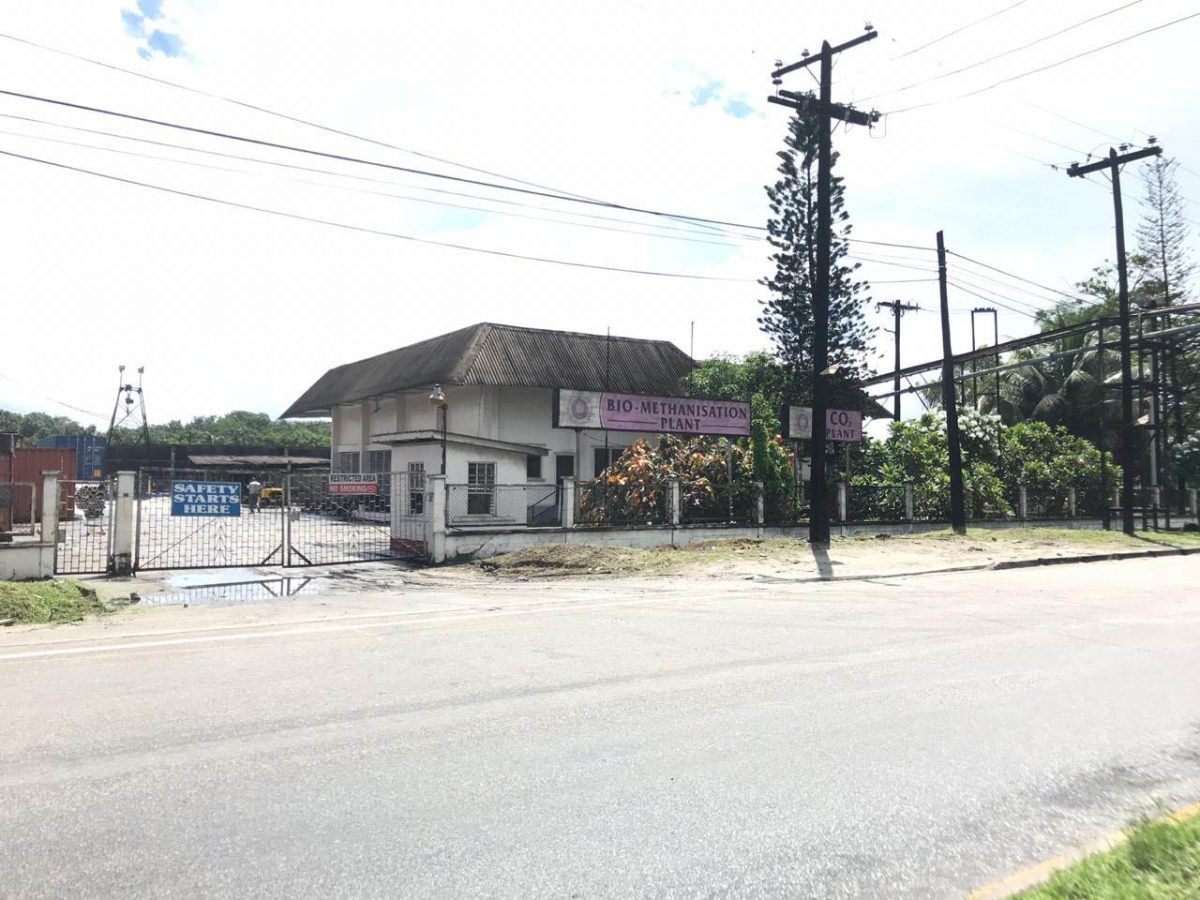The Environmental Protection Agency (EPA) has granted permission to local rum producer Demerara Distillers Limited (DDL) to resume the operation of its Biomethanisation Plant at Diamond, East Bank Demerara, following a year-long closure as a result of environmental violations.
After executing remedial work, which included the construction of secondary containment facilities, restructuring the layout of its pipes, and replacing valves, DDL was recently granted permission to resume operations at the plant from July 17th.
DDL has also been tasked with implementing measures to ensure that the wastewater discharged reaches the standards set by the EPA.
On this note, Odessa Duncan, Senior Environmental Officer at the EPA, said DDL is seeking the best technologies available to treat the wastewater before it is discharged in the canal and ends up in the Demerara River. It was explained that the current discharge does not meet the EPA standards and as a result the agency has asked the company to implement the necessary measures.
“They are looking for the best available technologies to meet the required standards. We are working with them to meet this but in the meantime we will be doing weekly water sampling testing along with them to assess the impacts on the environment at the time of discharge,” Duncan said as she assured that the EPA is serious about measures being in place to safeguard the environment.
The Senior Environmental Officer told Sunday Stabroek that the agency granted approval subsequent to an inspection on June 30th and by way of written communication on July 8, the company was informed of the decision.
She explained that under the permission granted, the plant is allowed to operate at a maximum capacity of 75%, which means that it can treat 560,000 cubic meters of wastewater from the distillery daily.
“Ninety per cent of that water will be fed into digester 2C (one of three tanks at the plant) while the remainder will be fed into the digester 2B to start up and process the bacteria for a six weeks period. 2A currently is inactive to allow for space,” Duncan explained.
Under the EPA’s directives, the company was required to construct a secondary containment inside of the bond walls, around the compound, and around the valves leading to the tanks. DDL was also asked to reroute its pipe distribution network by placing it above ground so that any breaches would be easily identifiable.
It was also required to execute integrity tests of the tanks since it has been out of operation for over a year. This Duncan said is necessary to ascertain the durability of the tanks and identify any threats that may result in leakage.
Duncan further pointed out that during this stage, DDL is required to conduct weekly water testing to check for impurities and to have an understanding of the effects of water discharge on the environment.
She noted, too, that the company is currently constructing a ground water well, which is important to its operations. The well is being drilled under the guidance and supervision of EPA.
After an assessment found the company to be in violation of environmental operating standards, the EPA had ordered that the company cease operations at the plant.
The EPA had carried out an inspection in wake of reports by Great Diamond residents that wastewater from the company’s biomethanisation plant had been affecting them. It was also found that the company did not have the requisite environmental permits for some sections of its operations.
During a visit to the site and the affected community, the EPA found the company has been sending wastewater openly into the canals and the river.
As a result, the company is now committed to the implementation of a new department just to manage the environment. A Canadian consultancy firm and other personnel were hired to assist with the process.
This newspaper has tried contacting DDL for an update on works completed but repeated efforts have been unsuccessful.
EPA Executive Director Dr Vincent Adams has praised the company for its move to establish an environmental management department.
“The company decided they will establish an environmental management department to focus on, well, environmental issues. They brought in a Canadian consultant to help with this process, they are looking at the best available technology and best qualified personnel to deal with these issues,” Adams had reported.
“We found that there was effluent from these 10 facilities… and for example, they were washing some waste tanks and then dumping that directly into the Demerara River. They also went ahead, built some stuff that needed permits and things like that…,” he added.
He said that when DDL was told of some of the observations and findings of the EPA’s review, it was “very responsive and very cooperative” and thereafter proposed the environmental department.
“Things now would be far better because they never had an environmental department. They were discharging waste which wasn’t treated into the river … that has changed now so it is a very strict standard. Everything is working out for the better. You see, so not only the biomethanisation plant but that one aspect triggered an entire review and they are really upgrading those. We will have a better operating plant and DDL is now forming the model of how facilities are expected to operate,” Adams added.




